
Johann Sebastian Bach composed the church cantata Herz und Mund und Tat und Leben, BWV 147 in 1723 during his first year as Thomaskantor, the director of church music in Leipzig. His cantata is part of his first cantata cycle there and was written for the Marian feast of the Visitation on 2 July, which commemorates Mary's visit to Elizabeth as narrated in the Gospel of Luke in the prescribed reading for the feast day. Bach based the music on his earlier cantata BWV 147a, written originally in Weimar in 1716 for Advent. He expanded the Advent cantata in six movements to ten movements in two parts in the new work. While the text of the Advent cantata was written by the Weimar court poet Salomo Franck, the librettist of the adapted version who added several recitatives is anonymous.
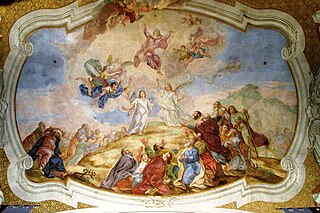
Lobet Gott in seinen Reichen, BWV 11, known as the Ascension Oratorio, is an oratorio by Johann Sebastian Bach, marked by him as Oratorium In Festo Ascensionis Xsti, probably composed in 1735 for the service for Ascension and first performed on 19 May 1735.

Erfreut euch, ihr Herzen, BWV 66.2, is a church cantata for Easter by Johann Sebastian Bach. He composed it for the Second Day of Easter in Leipzig and first performed it on 10 April 1724. He based it on his congratulatory cantata Der Himmel dacht auf Anhalts Ruhm und Glück, BWV 66.1, first performed in Köthen on 10 December 1718.

Herr Gott, Beherrscher aller Dinge, BWV 120.2, is a wedding cantata by Johann Sebastian Bach. He composed and first performed it in Leipzig, most likely in 1729.
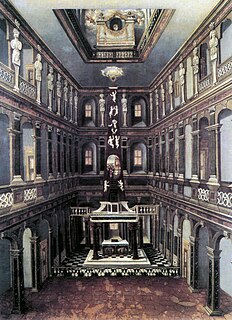
Ärgre dich, o Seele, nicht, BWV 186 is a church cantata by Johann Sebastian Bach. He composed it originally in Weimar in 1716 for Advent, BWV 186a, and expanded it in Leipzig in 1723 for the seventh Sunday after Trinity, where he first performed it on 11 July 1723.
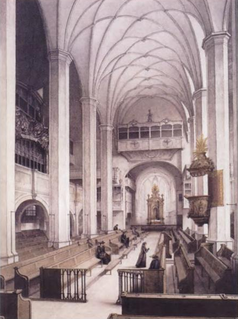
Erforsche mich, Gott, und erfahre mein Herz, BWV 136 is a church cantata by Johann Sebastian Bach. Bach composed the cantata in 1723 in Leipzig to be used for the eighth Sunday after Trinity. He led the first performance on 18 July 1723.

Lobe den Herrn, meine Seele, BWV 69, also BWV 69.2, is a cantata by Johann Sebastian Bach.

Johann Sebastian Bach composed the church cantata Warum betrübst du dich, mein Herz, BWV 138, in Leipzig for the 15th Sunday after Trinity and first performed it on 5 September 1723. The text by an unknown author includes three stanzas from the hymn of the same name. Its text and melody were formerly attributed to Hans Sachs, but were written by an unknown hymn writer. The cantata has seven movements and is scored for SATB soloists and choir, two oboes d'amore, two violins, viola and basso continuo. The cantata has features of a chorale cantata although it was written a year before Bach's annual cycle of chorale cantatas. Bach used an aria as the base of the Gratias of his Missa in G major.

Schau, lieber Gott, wie meine Feind, BWV 153, is a church cantata by Johann Sebastian Bach. He composed it in Leipzig for the Sunday after New Year's Day and first performed it on 2 January 1724.

Jesus Christus ist um unsrer Missetat willen verwundet is a St Mark Passion which originated in the early 18th century and is most often attributed to Reinhard Keiser. It may also have been composed by his father Gottfried or by Friedrich Nicolaus Bruhns. Johann Sebastian Bach produced three performance versions of the Passion, the last of which is a pasticcio with arias from George Frideric Handel's Brockes Passion. There are two other extant 18th-century versions of the Passion, both of them independent of Bach's versions. The Passion was performed in at least three cities in the first half of the 18th century: in Hamburg in 1707 and 1711, in Weimar around 1712, and in Leipzig in 1726 and around 1747.

Ein Herz, das seinen Jesum lebend weiß , BWV 134, is a church cantata for Easter by Johann Sebastian Bach. Bach composed the cantata for the third day of Easter in Leipzig and first performed it on 11 April 1724. He based it on his congratulatory cantata Die Zeit, die Tag und Jahre macht, BWV 134a, first performed in Köthen on 1 January 1719.
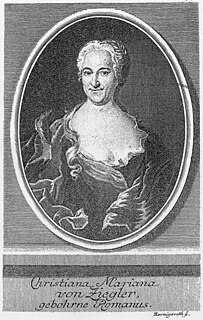
Er rufet seinen Schafen mit Namen, BWV 175, is a church cantata by Johann Sebastian Bach. He composed the cantata in Leipzig for the third day of Pentecost and first performed it on 22 May 1725.
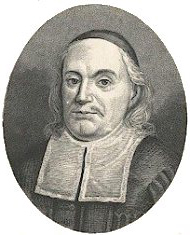
Ich hab in Gottes Herz und Sinn, BWV 92, is a cantata by Johann Sebastian Bach for use in the Lutheran service. He composed the chorale cantata in Leipzig for Septuagesimae and first performed it on 28 January 1725. It is based on the hymn "Ich hab in Gottes Herz und Sinn" by Paul Gerhardt (1647), and is the only chorale cantata Bach based on a hymn by Gerhardt.

Ich lebe, mein Herze, zu deinem Ergötzen, BWV 145, is a five-movement church cantata on a libretto by Picander which Johann Sebastian Bach, as its composer, probably first performed in Leipzig on Easter Tuesday, 19 April 1729. As a seven-movement pasticcio, with one of the added movements composed by Georg Philipp Telemann, it is an Easter cantata known as So du mit deinem Munde bekennest Jesum or as Auf, mein Herz!.

Es ist euch gut, daß ich hingehe, BWV 108, is a church cantata by Johann Sebastian Bach. He composed it in Leipzig for Cantate Sunday, the fourth Sunday after Easter, and first performed it on 29 April 1725.
Sei Lob und Ehr dem höchsten Gut, BWV 117, is a church cantata by Johann Sebastian Bach. He composed the chorale cantata in Leipzig between 1728 and 1731 for no specific occasion, based on the hymn by Johann Jacob Schütz.
Das neugeborne Kindelein, BWV 122, is a church cantata by Johann Sebastian Bach. Bach composed the chorale cantata in six movements in Leipzig for the Sunday after Christmas and first performed it on 31 December 1724.
Ich steh mit einem Fuß im Grabe, BWV 156, is a church cantata by Johann Sebastian Bach. He composed it in Leipzig for the third Sunday after Epiphany and first performed it on 23 January 1729. The cantata is well known for its opening sinfonia for orchestra and oboe solo.

Herz und Mund und Tat und Leben, BWV 147.1, BWV 147a, is a cantata by Johann Sebastian Bach. He composed it in Weimar in 1716 for the fourth Sunday in Advent, 20 December. It is uncertain if the work was performed then. He later expanded the work in 1723 as Herz und Mund und Tat und Leben, BWV 147.
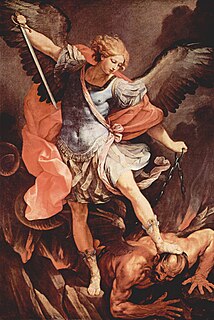
Man singet mit Freuden vom Sieg, BWV 149, is a church cantata by Johann Sebastian Bach. He composed the work in Leipzig for Michaelmas and first performed it on 29 September 1729. It is the last of his three extant cantatas for the feast.















